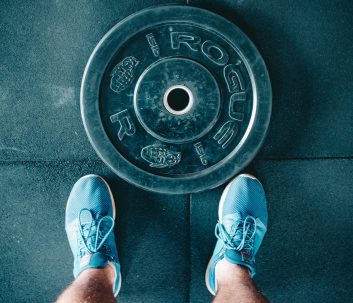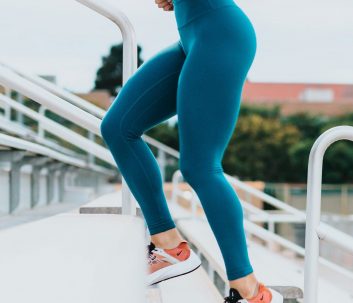
Exercise Tips for BIG Gains Without Pain
Imagine Describing to your great-great-great-great-grandparents what the biggest health hazard to the world now is:”We’ve got a lot of food and we don’t physically labor hard enough.”
We’re not inherently lazy. It’s only that the requirements of daily life no longer take a high amount of physical exertion. It appears, nevertheless, that we need to breathe sweat, hard and be challenged physically to maintain health. We now have to consciously add this movement to daily in the kind of exercise.
Time spent Exercising is a window of opportunity to overcome some of their physiological and/or biomechanical deficiencies we have generated through inactivity or possibly make them worse. When an exercise program is done improperly or doesn’t align with the needs and skills of the exerciser, pain and injury may result in a entire departure from the program.
Just about Any kind of exercise is better than no exercise. However, to make sure a workout program is guiding the body away from pain and injury, consider these tips:
Focus
While sitting, most of the spine and articulating joints embrace a”flexed” position. If completed for prolonged intervals, this position could cause bad posture, pain and joint dysfunction.
When Choosing exercises and moves to prioritize in the gym, consider the ones that are opposite to that of sitting:
flexion.
Exercise Tips: Prioritize hip extension with exercises like the deadlift, bridge and swing variants.
Lumbar Spine (Lower Back) Throughout Sitting: The back spine is flexed, adding compression into the disks.
Exercise Tips: Prioritize natural lordotic curve and pelvic control with exercises for example a bird-dog variation, prone arm/leg lift variants and board variations.
Sitting: The thoracic spine is flexed, and which increases the compression in the lumbar spine and slopes the shoulders forward.
Exercises that actually mimic the sitting posture, Such as abdominal crunches, should be lessened.
Produce Muscle Balance Around the Joints
There are two primary ways to create physical pain and dysfunction: Do nothing or do too much of one thing. In both of these cases, an imbalance of strength, stability and freedom is made around a joint. Finally, this prevents the joint from functioning properly, resulting in pain and a drop in performance.
Select exercises which challenge opposing muscles, Either within a workout or within the duration of a workout week. For instance:
For each”push” (push-up, bench press, military press, etc.), play a”pull” (rows, pull-ups, lat pull-down, etc.).
Check out this article for”pull” exercise thoughts: ACE-SPONSORED RESEARCH: What’s the Best Back Exercise?
For every”quad dominant” workout (squat, lunge, leg press), do a”hip dominant” workout (dead lift, swing, bridge, etc.).
Have a look at this article to get”hip dominant” exercise ideas: ACE-SPONSORED RESEARCH: What Is the Best Exercise to the Hamstrings?
For each”back flexion” exercise (crunch variations), do a”trunk extension” workout (back extension variants, likely extension variants, dead lift variations)
Read this article for”trunk flexion” exercise thoughts: Reality Check: Are Planks Truly the ideal Core Exercise?
For every exercise done in the sagittal (forward and rear ) airplane (pushes, pulls, lunges, squats, dead lifts, etc.), perform an exercise in either the frontal (side to side) airplane (lateral workouts, lateral raises, lateral shuffles, etc.) or transverse (rotational) airplane (chop and rotation variations).
Have a look at this article for shoulder exercise ideas: Dynamite Delts: ACE Research Tool Best Shoulder Exercises
To take it a step further, consider exercises that Concentrate on reversing the”sitting” posture (pulls, extensions, hip dominant, etc.) and do two of those exercises for every one of the others (flexions, quad dominant, pushes, etc.)
By attending to the balance of strength around a Joint, mobility and function could be maintained, and the likelihood of pain and injury is minimized.
After sitting all daylong, the joints, tissues and general structure of the human body isn’t prepared to have the challenges of intense movement and load. Always perform a whole-body warm-up that enhances communication between the mind and body, while assisting joints and muscles emerge from the sitting position so they can get the job done effectively.
Do It Right
For the most part, the exercises you understand, and enjoy can actually enhance your total function, resilience and energy. In other words, when they are done correctly.
Way they are supposed to. The proper muscles work to stabilize and purify joints. This stability produces improvements in function and performance. Muscles get stronger and joints stay healthy.
When done incorrectly, joints do not move the way They’re supposed to. This may cause a change of load off from muscles and into a joint. To protect against a potential injury, various muscles must compensate, detracting from the challenge to the muscle group.
Take the next steps to improve your exercise Method:
consult with a certified health and exercise professional. A certified personal trainer can help be sure you are performing exercises properly in addition to helping you create a more balanced, effective application. Every six to eight weeks, decrease the resistance you use by about one-third. Rather than counting reps, time each round for 40 minutes. During these 40 moments, try to execute 10 or fewer repetitions. This puts the focus on movement pace and technique while still delivering a challenge.
Rest. The present trend of high-intensity interval training has supported exercisers to slash rest times. While decreased rest instances can be beneficial when used correctly, they can also detract from the attention on appropriate execution of a workout. Make sure rest intervals are long enough for your body to recover and carry out the next pair of exercises correctly.
Exercise is a Chance to break the contemporary Daily mould of inactivity. Just about any form of exercise is better than none At all. Following these tips, however, can guarantee your exercise program helps You stay active, pain-free and performing at your best for life.
Imagine Describing to your great-great-great-great-grandparents what the biggest health hazard to the world now is:”We’ve got a lot of food and we don’t physically labor hard enough.”
We’re not inherently lazy. It’s only that the requirements of daily life no longer take a high amount of physical exertion. It appears, nevertheless, that we need to breathe sweat, hard and be challenged physically to maintain health. We now have to consciously add this movement to daily in the kind of exercise.
Time spent Exercising is a window of opportunity to overcome some of their physiological and/or biomechanical deficiencies we have generated through inactivity or possibly make them worse. When an exercise program is done improperly or doesn’t align with the needs and skills of the exerciser, pain and injury may result in a entire departure from the program.
Just about Any kind of exercise is better than no exercise. However, to make sure a workout program is guiding the body away from pain and injury, consider these tips:
Focus
While sitting, most of the spine and articulating joints embrace a”flexed” position. If completed for prolonged intervals, this position could cause bad posture, pain and joint dysfunction.
When Choosing exercises and moves to prioritize in the gym, consider the ones that are opposite to that of sitting:
flexion.
Exercise Tips: Prioritize hip extension with exercises like the deadlift, bridge and swing variants.
Lumbar Spine (Lower Back) Throughout Sitting: The back spine is flexed, adding compression into the disks.
Exercise Tips: Prioritize natural lordotic curve and pelvic control with exercises for example a bird-dog variation, prone arm/leg lift variants and board variations.
Sitting: The thoracic spine is flexed, and which increases the compression in the lumbar spine and slopes the shoulders forward.
Exercises that actually mimic the sitting posture, Such as abdominal crunches, should be lessened.
Produce Muscle Balance Around the Joints
There are two primary ways to create physical pain and dysfunction: Do nothing or do too much of one thing. In both of these cases, an imbalance of strength, stability and freedom is made around a joint. Finally, this prevents the joint from functioning properly, resulting in pain and a drop in performance.
Select exercises which challenge opposing muscles, Either within a workout or within the duration of a workout week. For instance:
For each”push” (push-up, bench press, military press, etc.), play a”pull” (rows, pull-ups, lat pull-down, etc.).
Check out this article for”pull” exercise thoughts: ACE-SPONSORED RESEARCH: What’s the Best Back Exercise?
For every”quad dominant” workout (squat, lunge, leg press), do a”hip dominant” workout (dead lift, swing, bridge, etc.).
Have a look at this article to get”hip dominant” exercise ideas: ACE-SPONSORED RESEARCH: What Is the Best Exercise to the Hamstrings?
For each”back flexion” exercise (crunch variations), do a”trunk extension” workout (back extension variants, likely extension variants, dead lift variations)
Read this article for”trunk flexion” exercise thoughts: Reality Check: Are Planks Truly the ideal Core Exercise?
For every exercise done in the sagittal (forward and rear ) airplane (pushes, pulls, lunges, squats, dead lifts, etc.), perform an exercise in either the frontal (side to side) airplane (lateral workouts, lateral raises, lateral shuffles, etc.) or transverse (rotational) airplane (chop and rotation variations).
Have a look at this article for shoulder exercise ideas: Dynamite Delts: ACE Research Tool Best Shoulder Exercises
To take it a step further, consider exercises that Concentrate on reversing the”sitting” posture (pulls, extensions, hip dominant, etc.) and do two of those exercises for every one of the others (flexions, quad dominant, pushes, etc.)
By attending to the balance of strength around a Joint, mobility and function could be maintained, and the likelihood of pain and injury is minimized.
After sitting all daylong, the joints, tissues and general structure of the human body isn’t prepared to have the challenges of intense movement and load. Always perform a whole-body warm-up that enhances communication between the mind and body, while assisting joints and muscles emerge from the sitting position so they can get the job done effectively.
Do It Right
For the most part, the exercises you understand, and enjoy can actually enhance your total function, resilience and energy. In other words, when they are done correctly.
Way they are supposed to. The proper muscles work to stabilize and purify joints. This stability produces improvements in function and performance. Muscles get stronger and joints stay healthy.
When done incorrectly, joints do not move the way They’re supposed to. This may cause a change of load off from muscles and into a joint. To protect against a potential injury, various muscles must compensate, detracting from the challenge to the muscle group.
Take the next steps to improve your exercise Method:
consult with a certified health and exercise professional. A certified personal trainer can help be sure you are performing exercises properly in addition to helping you create a more balanced, effective application. Every six to eight weeks, decrease the resistance you use by about one-third. Rather than counting reps, time each round for 40 minutes. During these 40 moments, try to execute 10 or fewer repetitions. This puts the focus on movement pace and technique while still delivering a challenge.
Rest. The present trend of high-intensity interval training has supported exercisers to slash rest times. While decreased rest instances can be beneficial when used correctly, they can also detract from the attention on appropriate execution of a workout. Make sure rest intervals are long enough for your body to recover and carry out the next pair of exercises correctly.
Exercise is a Chance to break the contemporary Daily mould of inactivity. Just about any form of exercise is better than none At all. Following these tips, however, can guarantee your exercise program helps You stay active, pain-free and performing at your best for life.




